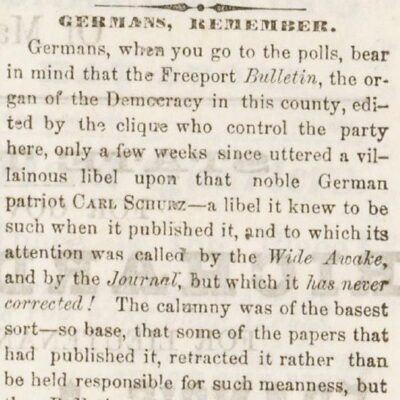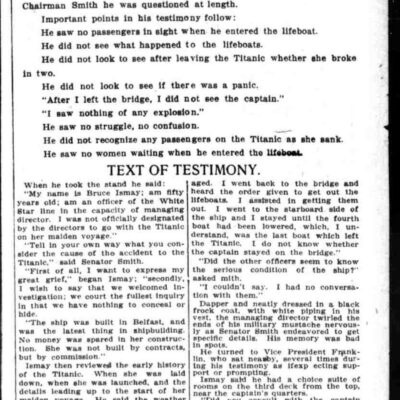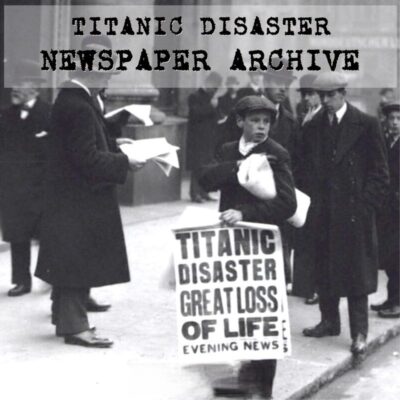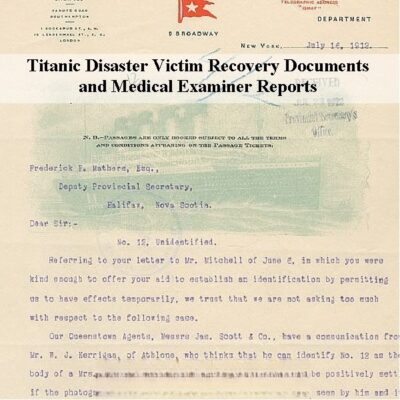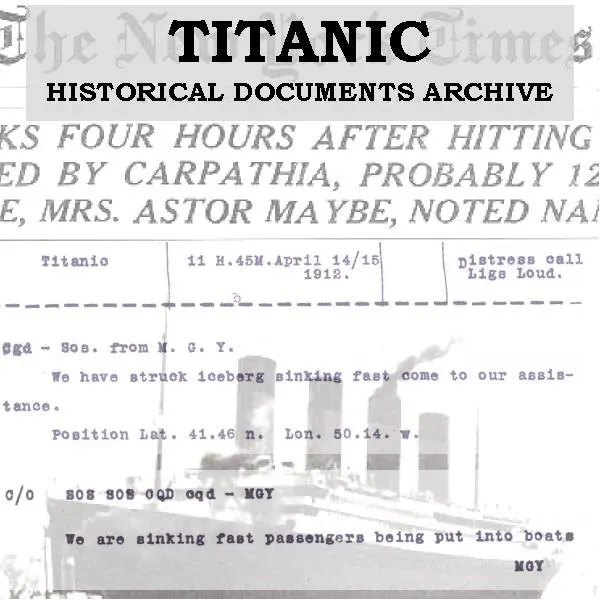
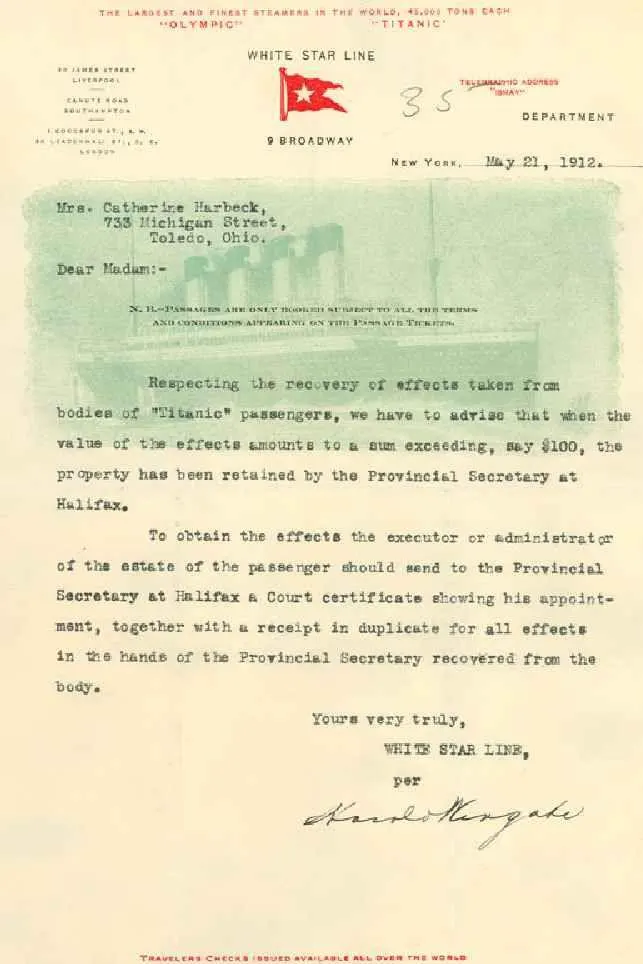
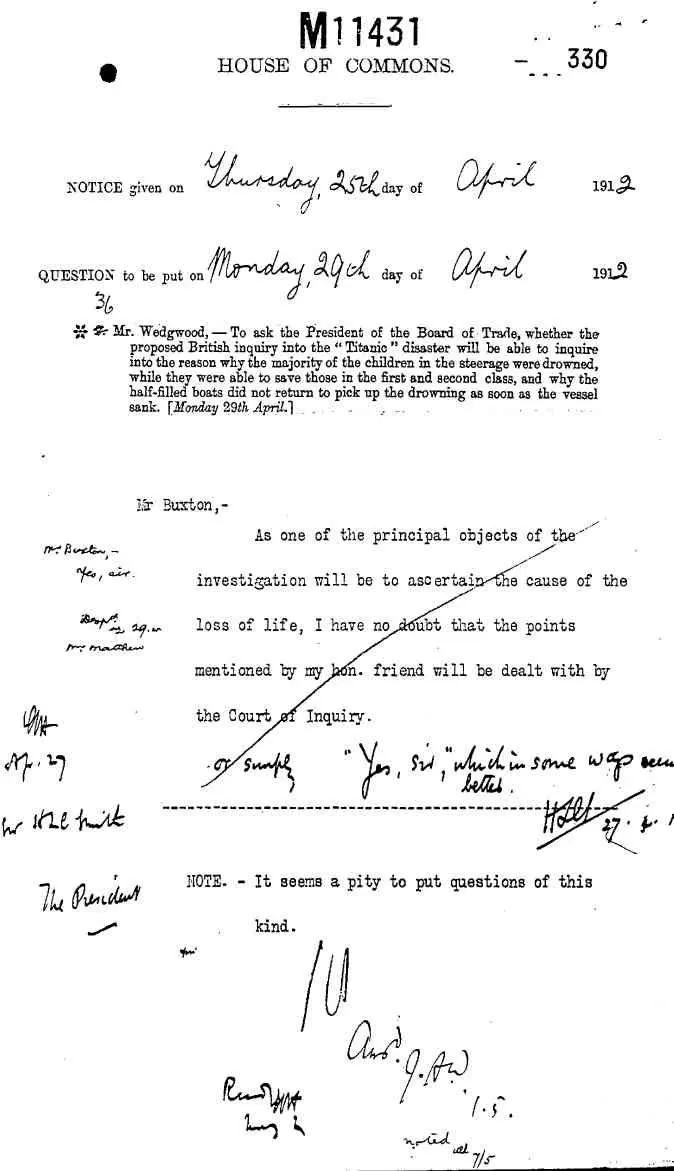
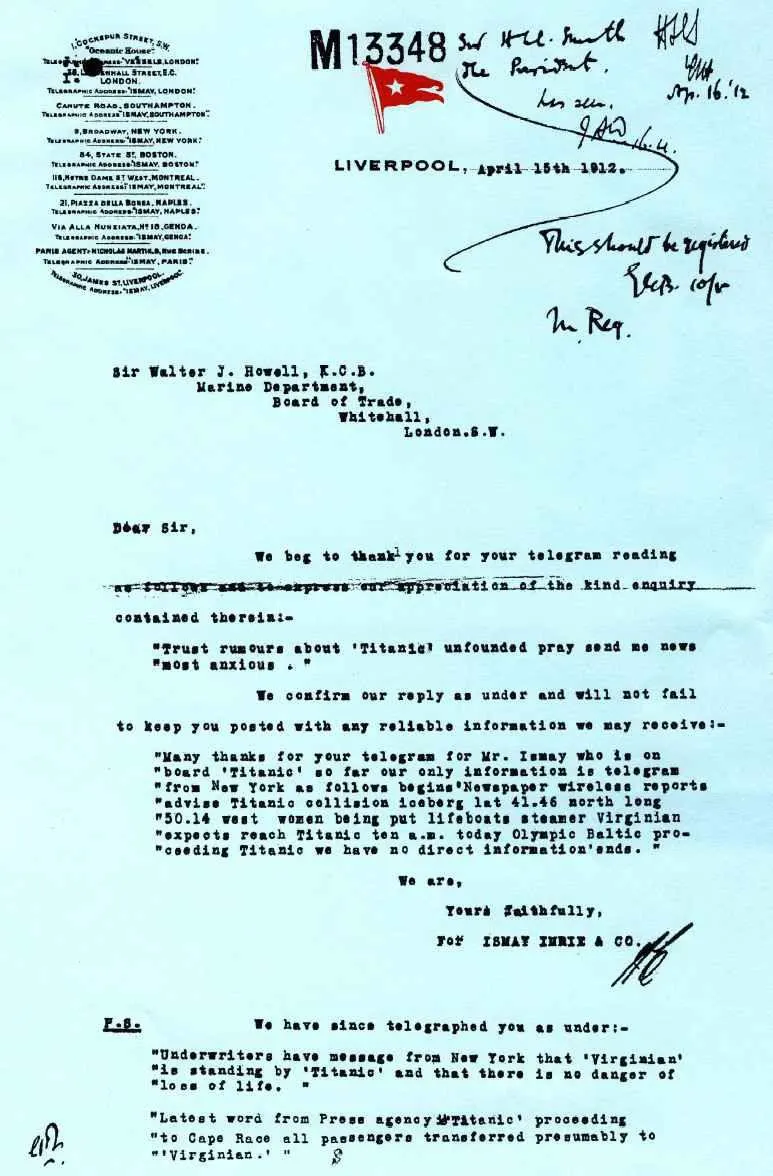
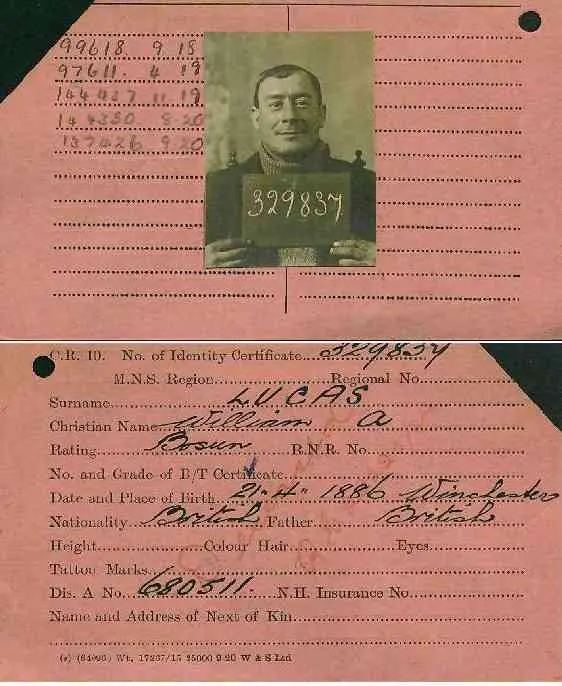
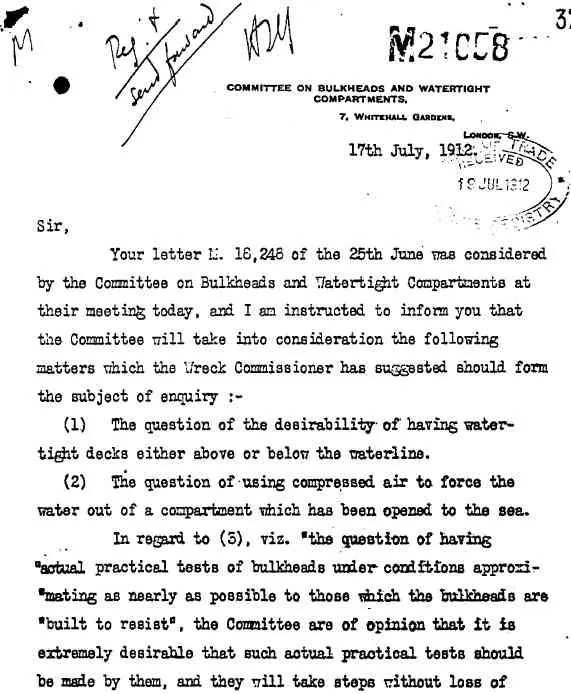

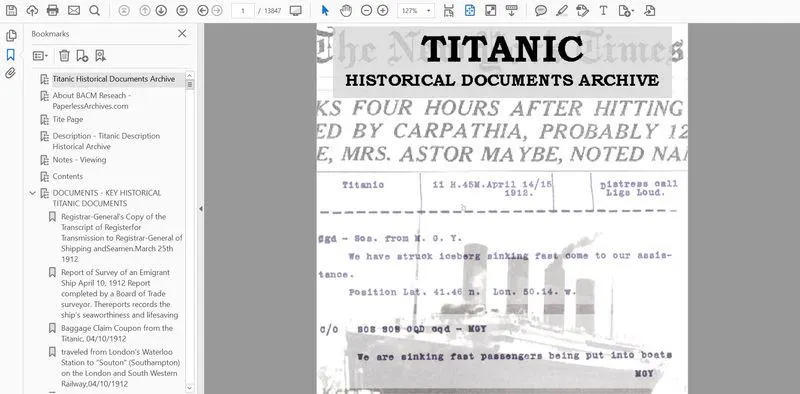
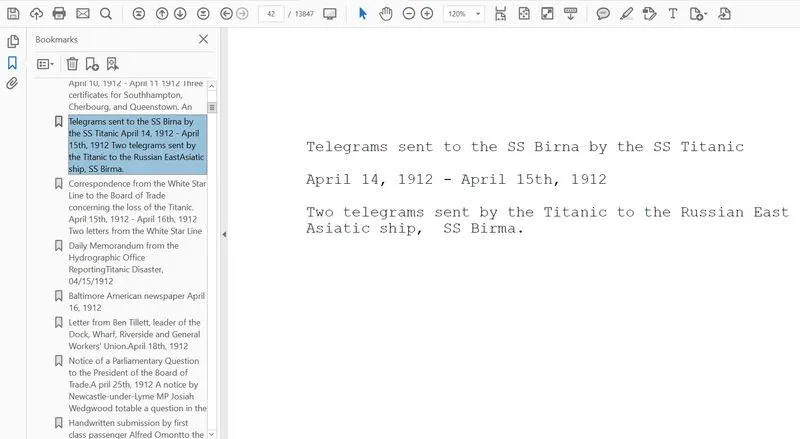
Titanic Disaster Historical Documents Archive
$29.90
Description
Titanic Disaster Historical Documents Archive
This comprehensive collection consists of 15,452 pages filled with a variety of materials, including documents, texts, newspaper articles, and photographs that relate to the Titanic disaster. These materials are original period sources sourced from prestigious institutions such as the National Archives, The Library of Congress, and the British National Archives.
The tragic sinking of the RMS Titanic on April 15, 1912, is widely regarded as one of the most significant and dramatic events of the twentieth century. Within just four hours of colliding with an iceberg, this largest passenger ship ever constructed sank during its inaugural voyage, resulting in the deaths of 1,517 individuals. Many of those who lost their lives were part of distinguished families from America, Britain, and Europe. Among the deceased were prominent figures like the well-known British journalist William Thomas Stead and heirs from the wealthy Straus and Astor families. The allure surrounding the ship, its first journey, and its famous passengers intensified the tragedy of its sinking in public perception. Almost immediately, myths and legends began to emerge about that fateful night, including stories of those who perished and those who survived. Some individuals were hailed as heroes and heroines by the media, such as the “unsinkable Molly Brown.” Conversely, certain figures were labeled as villains, including Captain Stanley Lord of the SS Californian and J. Bruce Ismay, Managing Director of the White Star Line. The catastrophe and the ensuing mythology surrounding the Titanic continue to captivate people’s imaginations long after the incident.
The order for the construction of the Titanic was officially signed by the White Star Line on April 30, 1907. The building process commenced at the Harland and Wolff shipyard located in Belfast, Ireland, and reached completion on April 2, 1912. Most of the crew members for the ship’s maiden voyage were recruited on Saturday, April 6, 1912. The Titanic set sail from Southampton, England, on its first and ultimately final journey at noon on Wednesday, April 10, 1912. The Titanic made a stop in Cherbourg, France, to board more passengers, including notable first-class travelers like Margaret, the Astors, and the Wideners. The ship then proceeded to Queensland, Ireland, where it picked up additional passengers before embarking on its journey. On Friday, April 12, at 1:30 PM, the Titanic set sail toward the vast Atlantic Ocean for its inaugural trip to the United States. At that time, the passenger list included 338 individuals in first class, 279 in second class, 712 in third class, along with a crew of 908 members.
Tragically, the Titanic struck an iceberg at 11:40 PM on Sunday, April 14. Although distress signals were sent out from the ship, assistance did not arrive in time to prevent disaster. By 2:20 AM on Monday, April 15, the Titanic had sunk into the depths of the ocean, approximately 13,000 feet below the surface. Eventually, help was dispatched, and between 4:10 and 8:10 AM, the Cunard Line’s Carpathia managed to rescue 706 survivors from the ill-fated ship. The Carpathia reached New York City at 9:00 PM on Thursday, April 18. In the aftermath of the sinking, two days later, recovery ships were sent back to the site to search for bodies. Ultimately, around 330 bodies were retrieved, with some taken to North America for burial and others laid to rest at sea.
In 1985, Dr. Robert Ballard from the Woods Hole Oceanographic Institute led an expedition that located the remains of the Titanic, initiating a series of explorations of the wreck site.
This collection contains documents related to the Titanic, preserved in the British National Archives. It includes 8,825 pages of archival material covering various aspects of the Titanic’s history. The collection of information encompasses a wide range of documents and records related to the Titanic tragedy. It includes a compilation passengers who were embarking on their journey at both Queenstown and Southampton, as well as detailed lists of crew members and passengers aboard the ship. Additionally, there are records of those who were lost in the disaster. The documentation further comprises the registration papers for the Titanic, communications from the British Foreign Office concerning the incident, and various correspondences and memorandums from the British Board of Trade’s Marine Department.
Moreover, this series consists of transcripts from the 1912 hearings conducted by the Subcommittee on Commerce of the United States Senate, alongside transcripts from the proceedings of the Court of Inquiry that the British Board of Trade initiated in the same year. There are also early film documents related to the Titanic, along with diagrams and memos regarding the lifeboat arms that were proposed for both the Olympic and the Titanic. Information about the staffing of Titanic’s lifeboats is included, as are correspondences and documents linked to the investigations by both the Bulkheads Committee and the Watertight Compartments Committee following the wreck.
Additionally, inquiries made by the House of Commons are part of this extensive archive, together with inspection reports from engineers and surveyors, which include a variety of correspondences, memorandums, and diagrams detailing the findings of these inspections. Some notable features include: A roster of passengers who embarked on the Titanic in Queenstown, where the majority were impoverished Irish immigrants heading to America and traveling in third class. There is also a list of passengers who boarded at Southampton, featuring several prominent figures such as the Countess of Rothes, Benjamin Guggenheim—the wealthy American mining mogul—J Bruce Ismay, and Colonel Gracie, who authored “The Truth About the Titanic,” released in 1913. Additionally, there are records that detail both crew members and passengers, including a document listing crew who departed from Belfast on April 6, 1912, complete with their signatures and payment rates. There are also details on the number of crew by department and passengers categorized by whether they were lost or saved, with some entries providing home addresses.
Furthermore, material from the Registrar General of Shipping and Seamen includes information on surviving Titanic crew members, showcasing photographs, personal names, as well as the date and location of their birth, along with their rating at that time. Some of these records even contain additional specifics, like tattoo descriptions. Among the 211 crew members who survived the Titanic disaster, seventy-three have their registration details included in this collection, which features individuals such as Frederick Fleet, the lookout who first spotted the iceberg; Stanley Lord, the captain of the SS Californian—dubbed the “mystery ship” during inquiries; Second Officer Charles Lightoller; and Fifth Officer Harold Lowe.
Correspondence outlines the initial plans for the Titanic, revealing that the ship was intended to be equipped with 32 lifeboats, which would have enabled it to accommodate over 2,000 individuals, far exceeding the 1,178 spaces ultimately available. Further correspondence indicates that the British Government opposed any inquiry into the Titanic disaster by the United States. There are documents regarding efforts to identify the unidentified ship sighted from the sinking Titanic and by the SS Mount Temple. An account exists of a letter penned by the carpenter of the SS Californian, stating that while distress signals were seen, the Californian did not provide assistance to the Titanic.
Statements made in the House of Commons by MP Horace Bottomley addressed concerns about lifeboat provisions and raised the question of whether the ship’s main owner, Bruce Ismay, should be prioritized over a less affluent emigrant who had paid for their passage. Investigations revealed that over 500 passengers, including women and children, remained aboard when Ismay abandoned the Titanic in a lifeboat. A letter from Stanley Lord, captain of the SS Californian, to the Board of Trade expressed his grievances about the public backlash he faced and requested that actions be taken to present his conduct that night in a more favorable way to both his employers and the public.
Additionally, wireless communications exchanged between various ships in the North Atlantic during mid-April 1912 are documented. Copies of telegrams sent to the SS Birma by the Titanic are included, along with information regarding ice warnings. A handwritten narration by Alfred Omont, a first-class passenger who survived, describes events leading up to and following the iceberg collision. There is also a transcript detailing an account by Arthur Rostron, captain of the SS Carpathia, of the swift journey through icebergs to rescue the Titanic survivors.
Moreover, a letter from Sir Alfred Chalmers, a Board of Trade member tasked with lifeboat regulations for passenger vessels, contended that having more lifeboats would not have resulted in saving additional lives during the Titanic tragedy. Documents related to the British International Pictures production titled “Atlantic,” released in 1929 and based on the Titanic’s sinking, reveal that Germany quickly utilized the film as anti-British propaganda, asserting that if the ship had been of German origin, the catastrophe would have been avoided. Additionally, there are records showing the attempts by the British Chamber of Shipping to prevent Alfred Hitchcock from creating a film about the Titanic disaster, alongside diagrams of the Titanic’s bulkheads and charts depicting the ice reported in proximity to the ship, as well as maps showing the locations of vessels near the Titanic.
United States Senate Hearing Transcripts
This document consists of 1,226 pages featuring the computerized text of testimonies provided during hearings that took place before a subcommittee of the United States Senate’s Committee on Commerce.
The hearings concerning the Titanic disaster were overseen by a dedicated subcommittee of the Senate Commerce Committee, which was led by Senator William A. Smith, who represented Missouri as a member of the Republican Party. These hearings officially commenced on April 19, 1912, in New York City. The significance of the Senate inquiry lies in its timeliness, as it took place shortly after the tragic event. The investigation began at the Waldorf-Astoria Hotel in New York City, merely a day after the survivors had arrived. Renowned filmmaker James Cameron utilized these Senate transcripts extensively while he was researching for his critically acclaimed film. He noted, “The Senate records, for instance, contain the precise dialogue uttered by the officers on the bridge just moments before the collision occurred.” Mr. Cameron has emphasized that the dramatic scenes depicted in his movie were meticulously scripted and staged according to the accounts provided by eyewitnesses.
One week into the hearings, they were relocated to the newly established caucus room located in the Russell Senate Office Building in Washington, D.C. This marked the inaugural use of that particular room for such proceedings. Over the course of the hearings, a total of 82 witnesses provided their testimony regarding various critical issues, including the disregard for ice warnings, the insufficient number of lifeboats available, the ship’s excessive speed, the lack of response from nearby vessels to the distress signals sent by the Titanic, and the treatment meted out to passengers based on their class status. The hearings came to a close on May 28, 1912, when Senator Smith visited the Olympic, the Titanic’s sister ship, while it was docked in New York to speak with some of its crew members. At the time of the Titanic’s sinking, the Olympic was situated approximately 500 miles away from the site of the disaster.
British Titanic Wreck Commissioner’s Court
This collection comprises 1,446 pages of computerized text detailing testimonies given during the Court of Enquiry, along with the final report issued by the Court. Just two weeks following the tragic sinking of the Titanic, the British Board of Trade took decisive action by forming a Commission of Enquiry. This inquiry was led by Lord Mersey, who served as a High Court Judge. The hearings for this investigation commenced on May 2, 1912, at the Wreck Commissioner’s Court located in the Royal Scottish Drill Hall, situated on Buckingham Gate in Westminster. The British Inquiry ultimately exonerated Captain Smith and the White Star Line from any accusations of negligence regarding the disaster that befell the Titanic. Throughout the sessions, various critical matters were deliberated, including ship subdivision, lifeboat requirements, the use of wireless telegraphy, the necessity to reduce speed when navigating near ice, and the implementation of searchlight technology.
Regarding photographs, there exists a collection of 136 images related to the Titanic. These photographs cover a range of subjects, showcasing the Titanic during its construction, its opulent interior, survivors in lifeboats, individuals rescued aboard the Carpathia, and icebergs that were present in the vicinity where the Titanic sank. Additionally, there are photographs documenting 72 crew members of the Titanic, sourced from registration cards kept by the Registrar General of Shipping and Seamen.
In terms of immigration documentation, there are 52 pages from the Manifest of Alien Passengers intended for the United States Immigration Officer at the Port of Arrival. These documents pertain to the R.M.S. Carpathia, which arrived in New York on April 18, 1912, bringing with it survivors of the Titanic disaster. The forms include columns designated for various details such as the passengers’ age, occupation, residential address, nearest relatives or friends, their intended destination, physical descriptions, and places of birth.
As for the documents related to recovered bodies, they provide insight into the aftermath of the tragedy and the efforts made to identify those lost at sea. The Nova Scotia Provincial Secretary’s Office documented the handling of bodies recovered from the Titanic disaster up until May 13, 1912. The White Star Line organized ships to search off the coast of Halifax for the remains of passengers and crew members who had perished at sea. A total of 328 bodies belonging to victims of the Titanic were found in the ocean; some were buried at sea, while others were transported back to Halifax, the capital city of Nova Scotia, Canada. The responsibility for overseeing the management of these remains fell to the Provincial Secretary’s Office. This office compiled a report titled “Disposition of Bodies ex Titanic Recovered up to May 13, 1912,” which was divided into two main sections: one listing identified bodies and their final arrangements, and another containing details about unidentified bodies and their respective dispositions. The information recorded in this report included the names of the deceased, if available, specific physical characteristics, as well as descriptions of any clothing or personal items that were found with the bodies. It also indicated how each set of remains was ultimately handled. Notably, body number 122 belonged to J. J. Astor.
Additionally, there are files from the Halifax Medical Examiner, consisting of 93 pages of documentation from both the City of Halifax and the Town of Dartmouth. These documents pertain to the remains and belongings of several Titanic victims that were recovered.
A study conducted by the United States National Institute of Standards and Technology focused on the metallurgy of the RMS Titanic. A report published in 1998, titled “Metallurgy of the RMS Titanic,” was produced by the Metallurgy Division. The study involved detailed metallurgical and mechanical examinations of steel and rivet samples that were retrieved from the Titanic wreck. Forensic analysis was carried out to assess whether the condition of the ship’s steel and rivets contributed to the extent of damage it suffered when it collided with an iceberg on the night of April 14, 1912.
Lastly, there is a collection of 1,036 pages of electronic text comprising five books related to the Titanic tragedy. Among these works is “The Loss of the S. S. Titanic” authored by Lawrence Beesley. Lawrence Beesley was one of the passengers who traveled in second class on the ill-fated Titanic. He penned his account a mere two months following the tragic sinking of the ship.
In “Titanic and Other Ships,” CH Lightoller, the highest-ranking officer who survived the Titanic disaster, reflects on his extensive maritime career. His journey began at the tender age of thirteen as an apprentice on a sailing vessel, eventually leading him to command a destroyer during World War I. Besides detailing his experiences related to the Titanic, Lightoller shares thrilling tales of storms, fires, other maritime disasters, and his adventures as a gold seeker in the Klondike region.
Logan Marshall’s book, “Sinking of the Titanic and Great Sea Disasters,” stands out as one of the pioneering “instant books” that were marketed directly to consumers through door-to-door sales and newspaper advertisements across the United States. This publication gathers information hastily from newspaper coverage and leans heavily towards sensationalist storytelling rather than strict accuracy. It captures the public’s emotional response to the catastrophic sinking of the Titanic.
“Notes on Life and Letters,” authored by Joseph Conrad and released in 1924, features two frequently referenced essays that he wrote in 1912 regarding the Titanic tragedy. These essays, titled “Some Reflections, Seamanlike and Otherwise, on the Loss of the Titanic” and “Certain Aspects of the Admiralty Inquiry into the Loss of the Titanic,” provide insightful perspectives on the event.
John Jacob Astor, a wealthy inventor and one of the victims of the Titanic, wrote a science fiction novel entitled “A Journey to Other Worlds.” Completed in 1887 and set in the year 2000, the narrative explores themes such as aviation, space exploration, anti-gravity technology, television, a global telephone system, and solar energy advancements.
Titanic: A Timeline and Cast of Characters
1907:
- April 30: White Star Line orders construction of the Titanic.
1912:
- April 2: Construction of the Titanic is completed at the Harland and Wolff shipyard in Belfast, Ireland.
- April 6: Most of the crew for the Titanic’s maiden voyage is hired.
- April 10:Noon: The Titanic departs from Southampton, England.
- April 11:The Titanic stops at Cherbourg, France, picking up additional passengers, including Margaret (Molly) Brown, the Astors, and the Wideners.
- April 12:The Titanic stops at Queenstown, Ireland, to pick up more passengers, mostly Irish emigrants traveling in third class.
- 1:30 PM: The Titanic leaves Ireland for the open sea, carrying 338 first-class passengers, 279 second-class passengers, 712 third-class passengers, and 908 crew members.
- April 14:11:40 PM: The Titanic strikes an iceberg.
- Distress calls are sent from the Titanic.
- April 15:2:20 AM: The Titanic sinks in 13,000 feet of water.
- 4:10 AM – 8:10 AM: The Cunard Line’s Carpathia rescues 706 Titanic survivors.
- April 18:9:00 PM: The Carpathia arrives in New York City.
- April 19:US Senate hearings into the disaster begin, chaired by Senator William A. Smith.
- April 20:Ships are dispatched to recover bodies from the wreck site.
- May 2:The British Board of Trade opens a Commission of Enquiry, headed by Lord Mersey, into the sinking of the Titanic.
1929:
- British International Pictures releases the film “Atlantic,” based on the sinking of the Titanic.
1985:
- A team led by Dr. Robert Ballard of the Woods Hole Oceanographic Institute discovers the wreck of the Titanic.
1998:
- The National Institute of Standards and Technology publishes a report, “Metallurgy of the RMS Titanic,” analyzing the steel and rivets recovered from the wreck.
Cast of Characters:
Passengers:
- John Jacob Astor IV: American millionaire, inventor, and science fiction author. Died in the sinking.
- Margaret (Molly) Brown: American socialite and philanthropist, later known as “the Unsinkable Molly Brown” for her heroism during the sinking. Survived.
- Benjamin Guggenheim: American mining magnate. Died in the sinking.
- Lawrence Beesley: British science teacher and second-class passenger. Survived and wrote an account of the sinking, “The Loss of the S. S. Titanic.”
Crew:
- Captain Edward John Smith: Captain of the Titanic. Died in the sinking.
- First Officer William Murdoch: Died in the sinking.
- Second Officer Charles Lightoller: The most senior surviving officer. Survived and wrote about his experiences in “Titanic and Other Ships.”
- Fifth Officer Harold Lowe: Commanded a lifeboat and returned to the sinking site to search for survivors. Survived.
- Frederick Fleet: Lookout who first spotted the iceberg. Survived.
Others:
- J. Bruce Ismay: Managing Director of the White Star Line. Survived the sinking in a lifeboat, facing heavy criticism for leaving while passengers remained onboard.
- Senator William A. Smith: US Senator who chaired the Senate inquiry into the Titanic disaster.
- Lord Mersey: High Court Judge who chaired the British Board of Trade’s inquiry into the sinking.
- Dr. Robert Ballard: Oceanographer who discovered the wreck of the Titanic in 1985.
- Stanley Lord: Captain of the SS Californian, which was near the Titanic when it sank. He was criticized for not responding to the Titanic’s distress signals, although his role in the events remains controversial.
- Horace Bottomley MP: Member of the British Parliament who raised questions about lifeboat capacity and the actions of J. Bruce Ismay during the disaster.
- Arthur Rostron: Captain of the Carpathia, which rescued the Titanic survivors. He received wide acclaim for his swift actions and skillful navigation through ice fields to reach the survivors.
- Alfred Omont: First-class passenger who survived the sinking and provided a written account of the events.
This timeline and cast of characters are based on the information provided in the source. Additional research may reveal further details about the events and people involved in the Titanic disaster.
